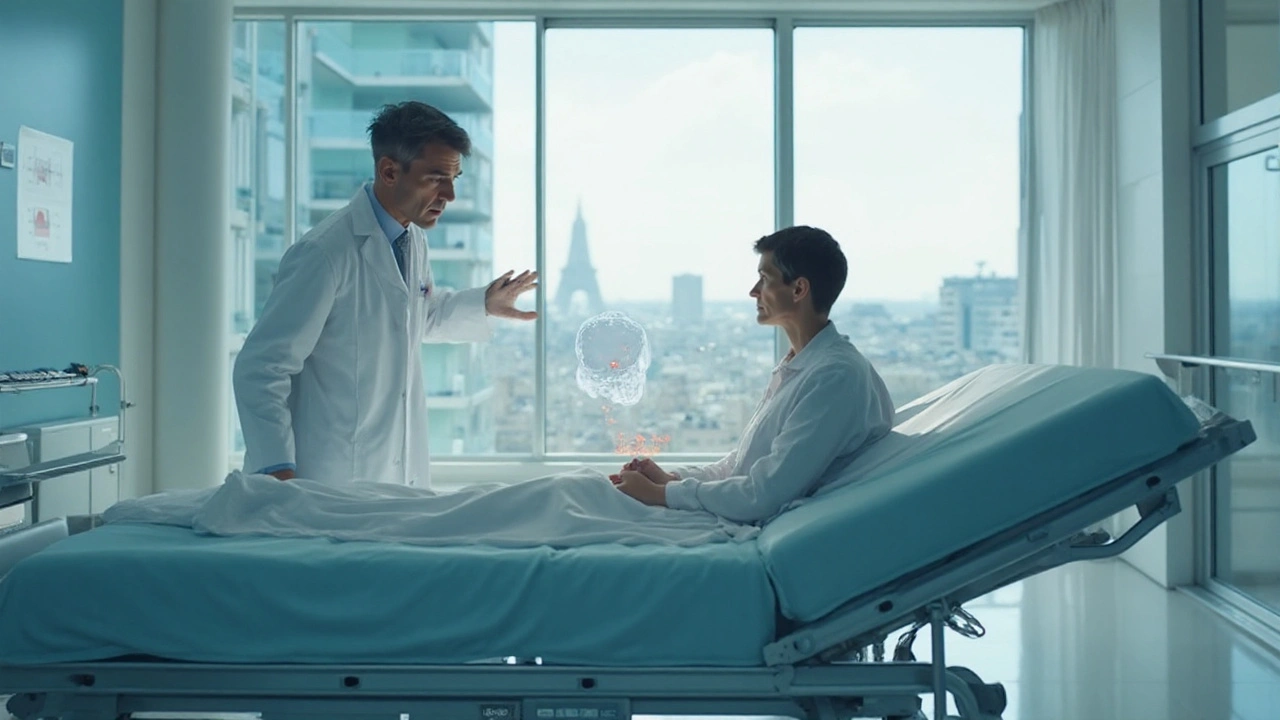Central Nervous System Leukemia – What You Need to Know
When leukemia spreads into the brain or spinal cord, it’s called central nervous system (CNS) leukemia. It’s not a separate disease – it’s a complication of acute lymphoblastic (ALL) or acute myeloid leukemia (AML) that can show up at diagnosis or later during treatment. For men, recognizing the warning signs early can make a big difference in outcomes.
Common Signs and Symptoms
Because the brain and nerves control everything from vision to movement, CNS leukemia often produces clear, uncomfortable clues. Look out for:
- Headaches that don’t respond to usual pain meds
- Double vision or sudden loss of sight in one eye
- Numbness, tingling, or weakness in the arms or legs
- Seizures, especially if you’ve never had one before
- Balance problems or trouble walking straight
If you’re already battling blood cancer and notice any of these, tell your doctor right away. Early testing can catch the spread before it causes permanent damage.
How Doctors Diagnose CNS Involvement
Diagnosis relies on a few straightforward steps. The first is a lumbar puncture, also called a spinal tap. A needle draws a small amount of cerebrospinal fluid (CSF) from the spine, and the lab checks for leukemia cells. Imaging like MRI or CT scans may follow if the spinal tap is inconclusive or if symptoms point to a specific area.
Some labs also test the CSF for genetic markers that match the leukemia already identified in the blood. Matching markers confirm that the same cancer has invaded the CNS.
Treatment Options Tailored for Men
Treating CNS leukemia usually means adding therapy that can cross the blood‑brain barrier. The most common approaches are:
- Intrathecal chemotherapy: Direct injection of drugs such as methotrexate or cytarabine into the CSF.
- Systemic high‑dose chemotherapy: Certain drugs, when given at high doses, can reach the brain and spinal cord.
- Radiation therapy: Focused beams target the affected parts of the brain or spine, often used when drug therapy isn’t enough.
For men, the choice of treatment may factor in age, overall health, and other medications. Doctors aim to control the leukemia while preserving cognitive function and quality of life.
Supportive care is just as important. Steroids reduce inflammation and swelling, while anti‑seizure meds keep seizures in check. Physical therapy can help regain strength and balance after treatment.
What to Expect After Treatment
Even after successful therapy, regular monitoring is essential. Follow‑up lumbar punctures every few months check for any returning cancer cells. Your doctor may also schedule periodic MRI scans, especially if you had radiation.
Living with CNS leukemia can be stressful, but staying informed helps you make better decisions. Keep a symptom diary, stay on top of appointments, and lean on support groups that focus on men’s cancer experiences.
Bottom line: CNS leukemia is a serious but treatable complication. Spotting symptoms early, getting a quick diagnosis, and following a tailored treatment plan give you the best shot at a full recovery.
